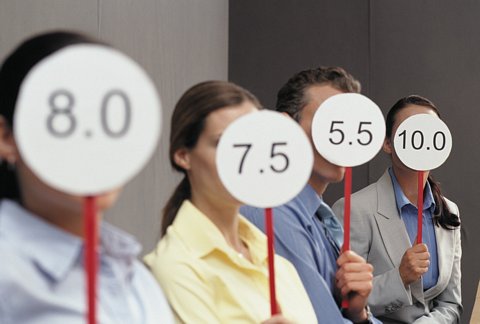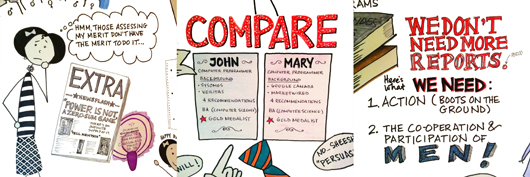
Rater Bias can be defined as an error in judgment while reviewing employees performance. The error can be a result of personal opinions and perspectives. The biases are unreasonable and stereotyped in most cases and vary from individual to individual. Since humans are fallible, biases can also be an outcome of an unconscious mind. Rater Biases is pervasive in nature and exist in all organization irrespective of size. It is an indispensable part of the performance management system. It is not a healthy practice and often tends to corrupt the workplace.
Types of Rater Bias
Some of the common Rater Biases are as follows :
- HALO AND HORN EFFECT
This refers to the phenomena where the manager tends to generalize ratings of an employee based on some positive or negatives events. For example, if the manager finds one positive aspect of an employee then he will inflate the ratings in all areas. This is called the HALO effect.
Similarly, if the manager finds one negative aspect of an employee then he will deflate the ratings in all areas by ignoring his recent performance. This is called the HORN effect.
- LENIENCY AND SEVERITY EFFECT
According to the Leniency effect, the manager tends to rate leniently as the name suggests. The employees are rated positively irrespective of their performance. In the Severity effect, the manager is quite rigid while rating employees. Therefore, there are chances that employees will get low ratings even if they perform fairly well and show improvements in due course.
- CENTRAL TENDENCY
In this effect, the manager gives an average rating to all the employees irrespective of their past or present performance. The manager might be lethargic and instead of reviewing each individual employee he gives similar ratings to all. In this case, the good performers suffer and low performers get an undue advantage despite low efforts.
- RECENCY
In this effect, the manager overlooks the overall performance of an employee and judges him/her on the recent performance. Some employees tend to fool the rater by performing well prior to the review period and do not work throughout the year.
- AFFINITY BIAS
According to this effect, the rater tends to give high ratings to employees with whom they have certain similarities in terms of attitudes, perception, educational background, experiences, hometown etc.
- ALIENATION BIAS
As the name suggests, in this effect, the rater tends to alienates the employee with whom he may not have anything in common. This practice is very unreasonable as performance should be the prime factor of consideration while reviewing employees.
- COMPARATIVE BIAS
In this effect, the rater makes a comparison among the employees of the organization instead of reviewing individual performance. This reduces the morale of the employees.

- NEGATIVE EVENT
If a negative event is associated with the performance of an employee then the rater will tend to rate him/her based on that negative event in spite of current positive events. One negative event revolves around the rater forever and he/she is unable to notice the positive aspects.
- FIRST IMPRESSION ERROR
In this error, the rater forms a premature opinion about an employee. The premature opinion may be positive or negative. Based on that premature opinion the rater judges the employee in the future review period.
- SITUATIONAL BIAS
In this type, the rater inflates or deflates the ratings of an employee based on factors which are beyond employee’s control to the employee.
- DISPOSITIONAL BIAS
In this case, the rater seeks opinions from supervisors of the employees instead of personally reviewing the employee’s performance.
- IDENTITY BIAS
In this case, the rater discriminates employees on grounds of sex, age, religion, caste, creed, social status, educational background, etc. The performance of employees is not taken into consideration.
Overcoming Rater Bias
Rater Bias is a plague which destroys the workplace culture. To help you with overcoming rater bias, I have outlined some tips.
Follow the below tips to overcome rater bias in your workplace.
-
WRITTEN RECORDS
To avoid rater bias the managers should resort to document trails i.e. They should keep a track of the performance of each employee in a written form on a day-to-day basis. For instance, after each meeting, the manager should note down the performance of each individual employee in a brief manner. This technique will help managers to judge employee on the basis of written records over a period of time. Since humans are bound to make errors, proper documentation will help avoid such biases by giving a clear picture of the employees’ performance.
- CONTINUOUS FEEDBACK
The top managers of an organization should be open to employees. A Feedback form can be designed and distributed to all members of an organization. This feedback forms will help to receive feedbacks from all hierarchical positions. The feedback form can be anonymous so that employees do not hesitate to speak their heart out.
- CLEAR GOALS DEFINITION
The top management should clearly define the goals and targets for each individual departments and thereafter break down into each individual. The goals should be communicated to each individual in an organization. Each one of them should know the requirements of the job. The managers should also communicate and elaborate the performance evaluation process of each employee. All the employees should have an abreast knowledge of the goals and evaluation of goals.
- ROLE OF MODERATOR
The top management should act as a moderator in the performance appraisal process. They should see whether there is a balance in the review process and no favoritism is associated with an employee. The moderator should ensure that the ratings are genuine and correct with regard to each employee.
- ROLE OF HR
HR should act as a savior for employees. HR should ensure that all the problems of each employee are redressed as soon as possible. HR should initiate a healthy employee-employer relationship. Excursions, team outing, competitions etc should be organized so that a friendly work environment prevails. The top managers should not be too rigid while dealing with employees. The employees should be able to discuss their problems with their managers without any hesitation.
- WORK CULTURE
The top manager should maintain a culture of trust in an organization. All members of an organization tend to follow in the footsteps of their managers and supervisors. Therefore, top managers should ensure that favoritism and nepotism do not exist in the organization and each member should be treated equally. The top performers should be rewarded and low performers should be given training so that the employees feel a sense of belongingness towards their job.
#leniency effect #the halo and horn effect
[…] assessment is completely subjective, the method may not be reliable as it’s exposed to risks of all bias related to subjectivity, recency and personal […]
[…] assessment is completely subjective, the method may not be reliable as it’s exposed to risks of all bias related to subjectivity, recency and personal […]